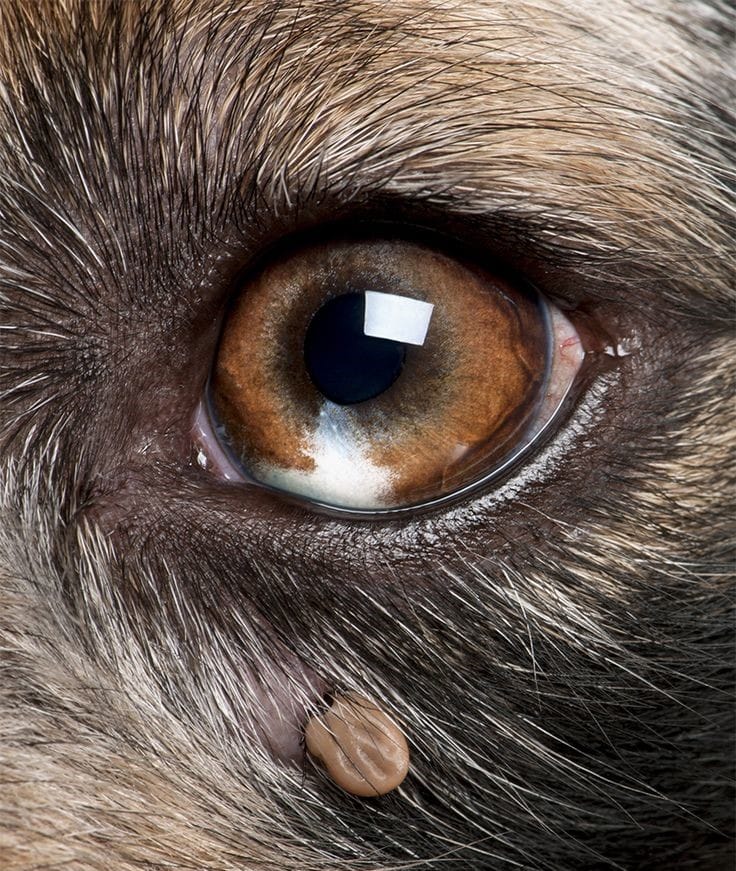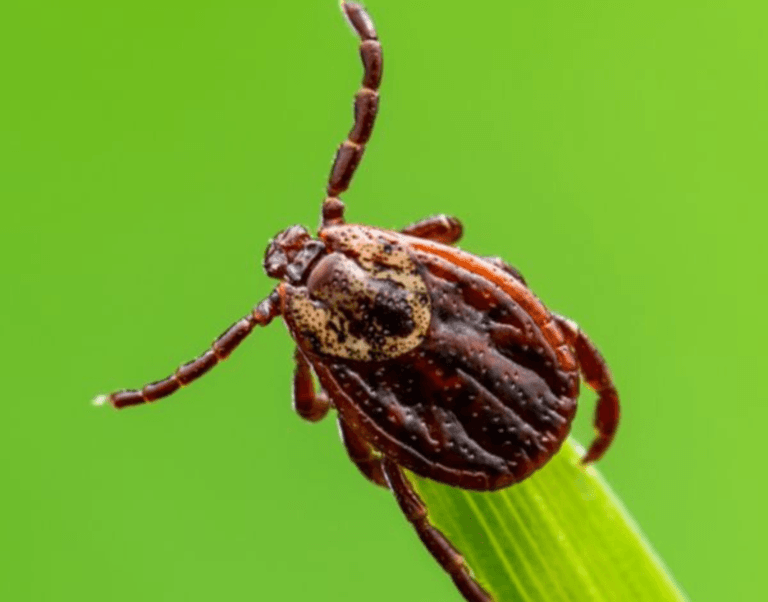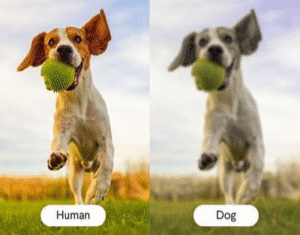Let’s talk about something that makes every pet lover cringe, TICKS.
These tiny parasites are experts at hiding. They sneak into unexpected places, latch on unnoticed, and can stay there for days if you’re not careful. Even when you think you’ve checked every inch of your pup, you might still find one in a spot you never expected, reminding you how important thorough checks really are.
I’ve been on a personal mission to outsmart these tiny parasites. Ticks aren’t just a nuisance, they can pose serious health risks to dogs. Because let’s be honest, nobody wants their pet exposed to potential infections or diseases. A quick once-over isn’t enough to keep your dog safe. Regular and thorough tick checks are essential to catch these parasites before they cause harm.
Innehållsförteckning
To help you prevent the same unsettling discovery I had, let’s go into the weirdest, sneakiest places ticks love to hide, places you might never think to check. Trust me, your dog’s health depends on it.
1. Between the Toes – The Sneaky Foot Suckers
Ever seen a tick play hide and seek? They’re basically undefeated champions. And one of their favorite hiding spots? Right between your dog’s toes. It’s warm, it’s dark, and let’s be real, how often are you digging through every single toe gap after a walk? Probably not as much as you should.
I realized this the hard way during a lazy Sunday cuddle session with Blaze. We were stretched out on the couch, enjoying a rare moment of peace, when I absentmindedly started rubbing his paws. That’s when I felt a tiny, firm bump nestled between his toes. My first thought? Probably just some dirt. But when I pulled his toes apart, my stomach flipped. Nope. Not dirt. It was a fully-fed, bloated tick, clinging on like it owned the place.
I jumped up so fast that I startled Blaze, who gave me that classic What’s your problem, human? look. Meanwhile, I was spiraling; How long has it been there? Did it come from our morning walk? What if there are MORE?! I grabbed my tweezers with shaky hands and went to work, trying not to gag as I carefully removed the disgusting little intruder.
After that incident, checking between Blaze’s toes became part of our routine, whether he liked it or not. Because if you don’t, ticks will gladly turn your pup’s paws into their personal hiding spots, and trust me, you do not want to discover one the way I did!
You can also get your tweezers from Walmart, and be a hero like me.
2. The Butt – The No-Go Zone
Look, I get it. No one wakes up excited to inspect their dog’s backside. It’s awkward, it’s uncomfortable, and let’s be honest, your dog is probably just as unimpressed with the whole situation as you are. But guess what? Ticks don’t care about personal boundaries. If there’s a warm, hidden spot where they can latch on undisturbed, they’re moving in. And under the tail? That’s prime real estate.
The problem is, most people don’t think to check there. Ticks take full advantage of this, burrowing in where the fur is thick and the skin is soft. If your dog has been extra wiggly during potty breaks or suddenly starts sitting like they just heard the worst dad joke, you might have a tick situation on your hands.
The best way to check? Grab a flashlight and take a deep breath. Gently lift the tail and look for any small, dark bumps attached to the skin. Sometimes, ticks in this area can go unnoticed for days, feeding away while your poor pup deals with the itch and irritation. If you find one, don’t panic, just grab your tweezers or a tick removal tool and get to work.
Your dog may not love the process (and you might need a few treats to win back their trust), but staying on top of tick checks in this ahem sensitive area can save them from discomfort, and you from dealing with a much bigger problem later. Regularly use a tick-repellent dog shampoo to keep the area tick-free. Find it on Amazonas
3. Inside the Ears – The VIP Lounge for Bloodsuckers
Most people check behind the ears, but what about inside? Some ticks are real overachievers and crawl deep into the ear canal. And trust me, you don’t want to find out about them the hard way.
My neighbor, Mrs. Dorothy, and her Schäferhund Bruno, one day she knocked on my door in a panic, saying Bruno had been shaking his head non-stop and scratching at his ears like he was trying to tune into a secret dog radio station. She thought it was an ear infection, until I offered to take a look.
I grabbed a flashlight and ear cleaner, gently lifted Bruno’s ear, and there it was. A fat, blood-filled tick, snuggled deep inside like it was on a vacation in paradise. Mrs. Dorothy gasped so loudly that Bruno flinched, clearly annoyed that we were interrupting his ear. We had to be extra careful removing it since yanking too hard could leave parts of the tick behind, causing an infection.
After a successful extraction (and a well-earned treat for Bruno), Mrs. Dorothy swore she’d never skip an ear check again. And neither should you! If your dog is shaking their head or scratching their ears more than usual, don’t ignore it, there could be a little vampire lurking in there, enjoying an all you can suck buffet. Shop at Petco to get your tick prevention ear cleaner too.
4. Under the Collar – The Overlooked Hideaway
Think of your dog’s collar as a tick’s secret bunker, undisturbed, and the perfect place for these sneaky little parasites to settle in. The area under a collar provides the ideal conditions for ticks to thrive: warmth, moisture, and zero interruptions. Since most pet owners don’t remove their dog’s collar daily, ticks can latch on, feed comfortably, and go completely unnoticed for days or even weeks.
Because collars press against the skin, they also make it harder to feel small bumps or irritations, allowing ticks to stay hidden longer. By the time you do a routine check, you might find a tick that’s already full and engorged, meaning it’s been there far too long. Worse yet, prolonged tick attachment can lead to skin infections, irritation, and even the transmission of tick-borne diseases.
What To Do?
- Make it a habit to remove your dog’s collar during tick checks.
- Run your fingers along the entire neck, feeling for any unusual bumps or scabs.
- If your dog has a thick coat, part the fur to get a clearer view of the skin beneath.
- Wash the collar thoroughly to eliminate any lingering pests before they have a chance to latch on again.
Ticks love undisturbed spots, so don’t give them the luxury of a hidden hideout. Regularly checking under the collar could be the difference between catching a tick early and dealing with a much bigger problem later!
5. Eyelids – Because Why Not?
Yep, you read that right. Ticks are so bold that they’ll latch onto your dog’s eyelids like tiny little pirates. And let me tell you, nothing prepares you for the horror of finding one that close to your pup’s eyeball.
On yet another occurrence, I discovered this nightmare when Blaze kept squinting and rubbing his face against the couch. I figured he just had an itch or maybe a bit of dust in his eye; until I leaned in for a closer look. That’s when I saw it. A small, dark bump clinging right near his lash line.

Cue me running for the tweezers, hands shaking as I tried to remove it without making Blaze flinch. The worst part? The little vampire was so attached that it took a few careful tries to get it out. After that, I swore to always check around his eyes because, apparently, ticks have zero respect for personal space!
6. Inside the Mouth – Ticks That Go Too Far
This one is just rude. Some ticks have absolutely no boundaries. They love soft tissues, warmth, and moisture; so yep, inside your dog’s mouth is fair game. If your pup is drooling more than usual, avoiding food, or pawing at their mouth like they just tasted something truly offensive, you might need to take a deep breath and check inside.
Yet again, you know Blaze, my overly dramatic four-legged king, made sure I’d never forget this horror story. It all started with him acting like he had just eaten the most offensive piece of food in existence. He was licking his lips aggressively, smacking his mouth, and giving me the deepest look of betrayal, as if I had personally wronged him. Naturally, I assumed he had something stuck in his teeth, maybe a rogue piece of kibble or a stubborn treat crumb.
Oh, how naïve I was.
I gently pried his mouth open, expecting to play dentist for a few seconds. Instead, I came face-to-face with the most obnoxiously fat tick I had ever seen, happily latched onto his gum line.
Blaze immediately recoiled with a full-body shudder, snapped his mouth shut, and threw himself onto the floor like a Victorian nobleman in distress. The dramatics were unmatched. He rolled onto his side, let out a long, exaggerated sigh, and refused to open his mouth again—because, apparently, if we ignored the problem, it would magically disappear.

Meanwhile, I was losing my mind. There was no way I was letting a tick claim squatter’s rights inside my dog’s actual mouth. It took treats, bargaining, and several deeply personal conversations before Blaze finally relented, giving me just enough time to get in there with my tweezers. The second I pulled that nasty intruder out? Blaze flung himself backward with another Oscar-worthy performance as if I had just asked him to donate a kidney.
For the rest of the day, he sulked, side-eyed me, and refused to acknowledge my existence. Apparently, I was the villain in this story. But did I care? Absolutely not.
Lesson learned: Always check inside your dog’s mouth. And if you have a drama king like Blaze, maybe brace yourself for emotional warfare while you’re at it.
7. Armpits – The Cozy Tick Hammock
Dog armpits are a goldmine for ticks. Think about it; it’s warm, it’s dark, and it’s well-protected from Skrapa and grooming. Unlike more exposed areas, armpits provide ticks with a snug, undisturbed space to latch on and feed without your dog even noticing.
Because this spot is hidden under layers of fur, ticks can go undetected for days or even weeks, before you realize they’re there. The worst part? By the time you find them, they’re usually engorged and deeply attached, making removal trickier.
So How Do You Prevent This?
- Turn belly rubs into undercover tick inspections.
- While your pup is basking in the glory of your attention, take a second to gently part the fur and check those armpits.
- Run your fingers along the skin, feeling for any small bumps or rough patches.
- If you feel something unusual, take a closer look because chances are, a tick might be setting up camp.
- Regular tick checks in these hidden areas can save you (and your dog) from a nasty surprise later.
- So next time your pup flops over for a belly rub, take the opportunity to be a hero—you might just stop a tiny invader in its tracks!
8. The Base of the Tail – The Final Boss Level
Ticks love this spot because most people stop their checks at the tail itself. But right at the base? That’s where the real infestations happen.
The base of the tail is also where your dog’s natural movements, wagging, sitting, or scratching, make it easier for ticks to go unnoticed. If your pup has been obsessively biting or licking their lower back, scooting more than usual, or suddenly flinching when you touch the area, it’s time for a deep dive into the fur.
To check for ticks here, run your fingers against the grain of your dog’s coat, feeling for any tiny bumps. A swollen tick can sometimes feel like a small pebble under the skin. Using a fine-toothed comb can also help spot any unwanted guests. If you find one, grab those tweezers, because once ticks settle in at the base of the tail, they aren’t leaving without a fight!
Viktiga slutsatser
Now that you know their secret hideouts, what’s next? Here’s what’s worked for me and Blaze:
- Daily Tick Checks – Yes, daily. Ticks don’t take weekends off, and neither should we.
- Tick Prevention Products – Collars, sprays, and treatments are lifesavers. Invest in good ones!
- Regular Grooming – A well-groomed coat makes it harder for ticks to hide.
- Avoid Tall Grass – Ticks are basically lurking in the wild, waiting for a free ride.
Final Thoughts
Ticks are relentless, but so are we! Knowing their weirdest hiding spots gives you the upper hand. Trust me, nothing ruins cuddle time faster than realizing there’s a bloodsucker latched onto your fur baby. So check those toes, lift that tail (yes, really), and give your pup the thorough inspection they deserve.





